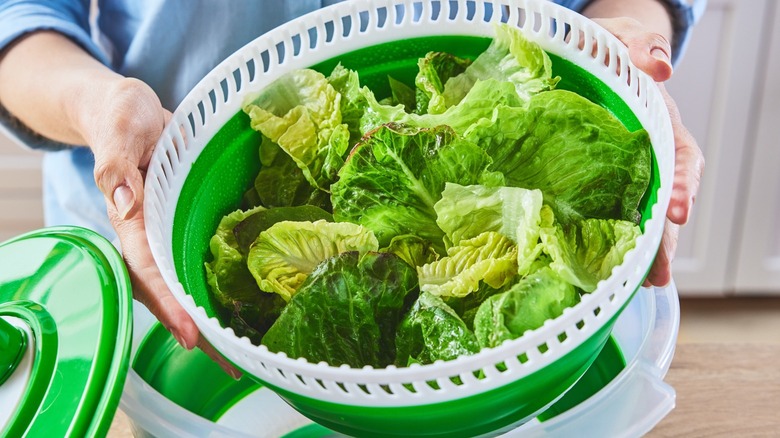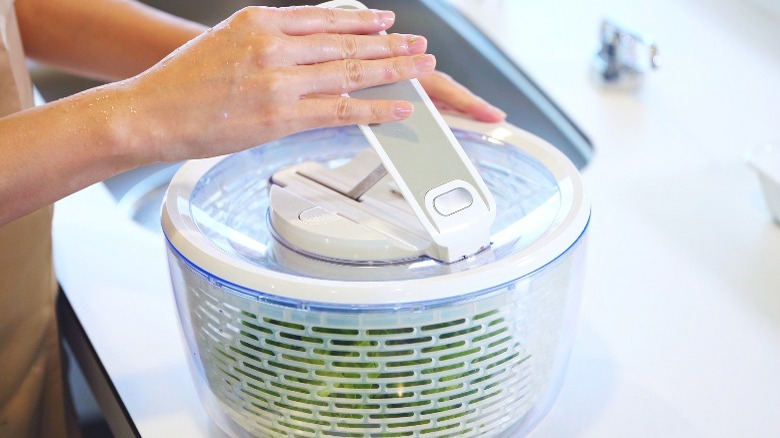Why You Shouldn't Fill Your Salad Spinner With Too Many Greens
Used correctly, a salad spinner is an indispensable kitchen tool that can take your salads to the next level. Though they take up a bit of precious real estate on your shelves, the tradeoff for crisp, clean, and dry salad greens is well worth it. No doubt, anyone who has ever tried dressing wet lettuce leaves — let alone eaten them — can attest to its value.
For the uninitiated, a salad spinner is a fairly simple, mechanical kitchen device consisting of three main components — an outer bowl (that can double as a serving bowl in some models), an inner perforated basket, and a lid with a rotating mechanism. Available in varying sizes, this handy manual gadget operates using centrifugal forces to quickly and efficiently spin off water and grit from freshly washed salad greens, resulting in a dry leafy surface ready to dress in your favorite vinaigrette, ranch, or other types of dressings.
If you're still not convinced it's a staple, you may want to see some of the other uses people have found for their spinners — such as salting veggies before roasting, soaking potatoes before frying, and even deseeding tomatoes.
Though it may sound like the perfect no-brainer drainer, there are some common ways salad spinners get misused on the regular. Aside from the frequent mistake of not washing your greens with the spinner as intended, if you want to spin to win with this essential accessory, there's one major pitfall you'll need to avoid.
Don't overfill your salad spinner
Salad spinners can only hold so much greenery and still be effective. The smaller styles spin two servings comfortably, the largest styles can accommodate enough lettuce for up to four to six servings. Depending on the size of your salad, the number of people you're feeding, and the volume and type of greens you're serving, you may need to spin your greens in several batches. That's because adding too much lettuce at one time can be a recipe for disaster.
Avoid overcrowding your salad spinner, pressing or smashing leaves down to fit. You'll be creating barriers to a clean, effective leaf spin, and running the risk of dirty greens, a soggy salad, or a lot of re-spinning to get all the water out. When used properly the best spinners get leaves dry in less than a minute. It can also cause problems with the mechanism in your salad spinner, depending on your model.
To ensure you've got the right amount of salad for your spinner, you can check the basket dimensions on the manufacturer's website, or just use your best judgment. Remember to give your lettuce some space between the leaves for the water to release. If the mechanism seems like it's struggling to spin, or your salad is still wet after spinning, you may have put too much in. Following these simple tips, you'll be spinning your greens (and not your wheels) in no time.

